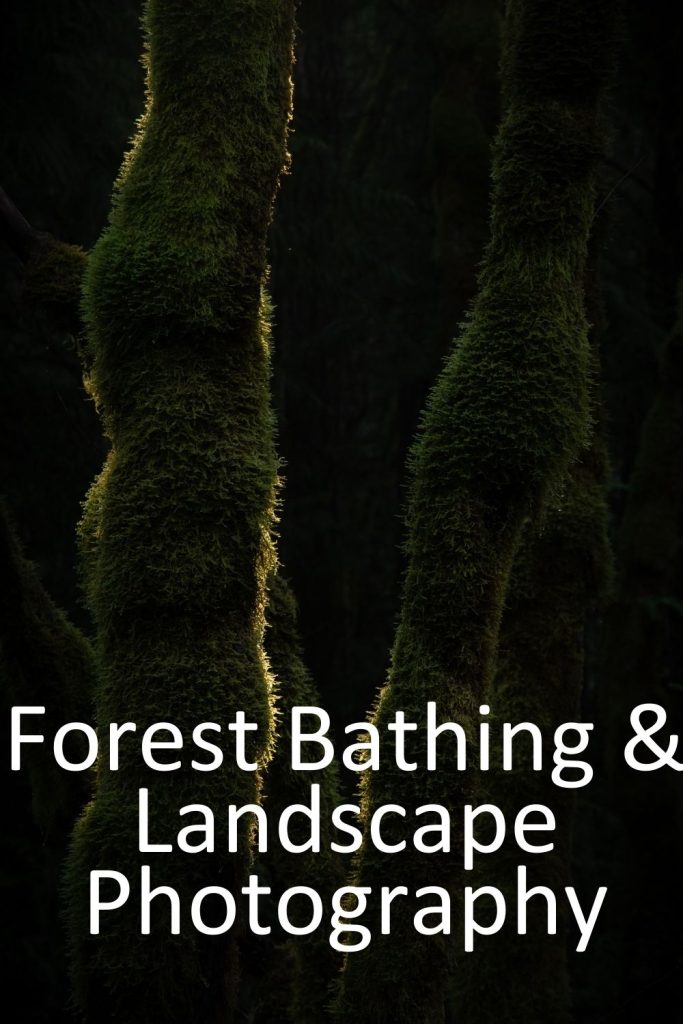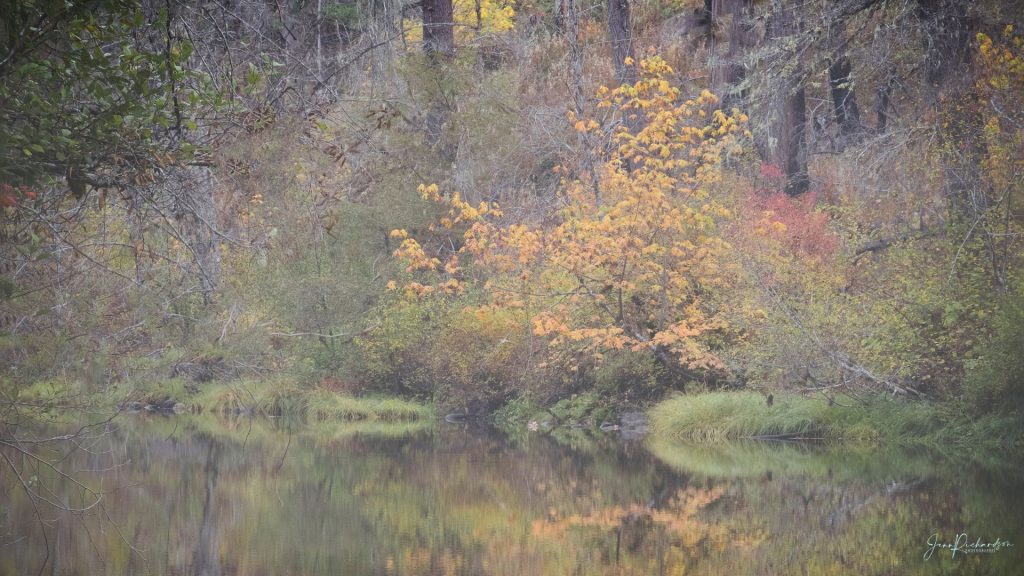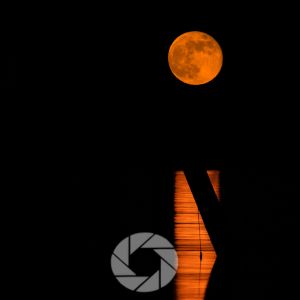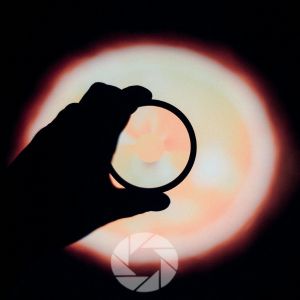
There are days when photography feels rushed. You’re chasing light, checking settings, and running through compositions like a checklist.
But there’s another way to approach photography, one that deepens both your connection to the land and the images you create.
This practice combines forest bathing and photography, encouraging you to slow down, tune into your senses, and let the forest itself guide your creative vision.
In this guide, we’ll explore what forest bathing is, how to bring its principles into your photography, and why blending mindfulness with your camera can unlock entirely new layers of creativity.
I receive a small commission from links in this post, thank you for your support
Forest Bathing and Its Impact on Your Photography
What is Shinrin Yoku?
The term shinrin yoku originates in Japan and translates to “forest bathing.” It isn’t about physical bathing, it’s about immersing yourself in the atmosphere of the forest.
Introduced in the 1980s, shinrin yoku was part of a national health initiative, encouraging people to spend more time in nature as a way to reduce stress and improve overall well-being.
Scientists now confirm what cultures across the world have long known: time in the forest lowers cortisol, calms the nervous system, and restores focus.
Forest bathing is less about doing and more about being. It asks you to step away from multitasking and simply notice: the rustle of wind through leaves, the smell of damp earth, or the subtle shifting of light on moss.
When we bring photography into this practice, the forest becomes more than a backdrop; it becomes a collaborator.
What is the Concept of Forest Bathing?
The concept of forest bathing can feel deceptively simple: spend time in the forest, paying attention. But at its heart, it’s revolutionary. It challenges our productivity-driven mindset by valuing being over doing.
For photographers, this is liberating. Instead of filling memory cards with hurried shots, you might come home with fewer images; but each one will carry more weight, more story, and more atmosphere.
Forest Bathing
At its core, forest bathing is about presence. You walk slowly, breathe deeply, and allow your senses to guide you.
Instead of rushing to find a “perfect” composition, you pause to experience the textures of bark, the way mist curls through the air, or the reflection of branches in a stream.
Forest bathing is an invitation to move from photographing trees and forests as “objects” to experiencing them as living beings with which you share space.
This shift has a direct impact on your work. Images created with presence often carry a deeper emotional weight. They’re not just technically correct; they’re infused with atmosphere, with the stillness and awe you felt in that moment.
Forest Bathing and Woodland Photography
So, how does this actually look in practice?
Slow your pace. When you enter a woodland with your camera, resist the urge to set up right away. Walk, pause, listen. Notice how the forest makes you feel before you think about capturing it.
Engage your senses. Forest bathing photography isn’t just about what you see. Pay attention to soundscapes; the call of a distant bird, water dripping from branches. These sensations influence the mood you’ll bring into your images.
Let subjects find you. Instead of hunting for compositions, let the forest reveal them. A shaft of light breaking through canopy, a cluster of ferns glowing against shadow, or a single leaf suspended in still air; these are often overlooked until you slow down.
Blending forest bathing and woodland photography means your images aren’t forced. They emerge naturally, echoing the quiet rhythm of the forest itself.








Forest Bathing Prompts for Photographers
| Prompt | How to Practice It | Photography Angle |
|---|---|---|
| One Tree Study | Spend an hour with a single tree; observe bark, roots, branches, leaves. | Capture textures, patterns, and seasonal changes. |
| Sound to Image | Close your eyes, listen, then photograph based on what you hear. | Translate bird calls, rustling leaves, or water drops into visual form. |
| Seasonal Journal | Visit the same woodland spot across all four seasons. | Document how light, color, and atmosphere evolve over time. |
| Elemental Series | Seek out Earth, Air, Fire, and Water in the forest. | Create a photo set embodying textures, mist, light rays, and reflections. |
| Mindful Walk | Walk slowly without agenda, photographing only when drawn. | Capture spontaneous, authentic moments the forest reveals. |
Forest Bathing Mindfulness
Adding mindfulness into your photography practice transforms the experience. Here are a few techniques to try:
- Peripheral vision awareness: Instead of focusing only on what’s in front of you, soften your gaze. Let your eyes take in the whole scene. This often reveals subtler compositions; a path of dappled light, or mist rising off a pond.
- Breath-led shooting: Before pressing the shutter, pause and take a slow breath. Allow that stillness to guide the moment of capture.
- Elemental mindfulness: Notice the four elements in the forest. Earth in the grounding textures of bark, air in drifting fog, fire in warm shafts of light, and water in streams and dew. These become metaphors and visual anchors in your photography.
Mindfulness shifts photography from being about collecting images to cultivating connection.
Practical Ways to Combine Forest Bathing and Photography
Here are some ways to actively merge shinrin yoku with your photography practice:
Leave extra time. Don’t schedule shoots too tightly. Give yourself hours, not minutes.
Walk without your camera first. Spend 15–20 minutes just being in the forest. Pick up your camera only after settling in.
Set mindful intentions. Instead of aiming for “epic shots,” set a theme like noticing light shifts, textures, or reflections.
Experiment with slow techniques. Long exposures of streams or fog help capture the forest’s meditative rhythm.
Keep a journal. After shooting, jot down sensations, sounds, or feelings. These notes can guide captions or reflections you share with your images.
Shinrin Yoku Photography Techniques
If you’re ready to take a more mindful approach, here are specific shinrin yoku photography techniques you can try:
- Use a tripod: Slows you down, encourages thoughtful framing, and supports longer exposures.
- Shoot wide open: A shallow depth of field isolates small details like leaves, flowers, or moss. This mirrors the intimacy of forest bathing.
- Seek soft light: Overcast days or foggy mornings are perfect for forest bathing photography. They create subtle, moody atmospheres.
- Experiment with intentional blur: Movement of branches in wind or gentle camera motion can capture the energy of the forest rather than just its form.
- Expose for emotion: Don’t chase technical perfection. Underexpose slightly for mood or embrace haze for softness.
Benefits of Forest Bathing for Photographers
Photographers who embrace forest bathing often notice:
- Less stress: Shooting becomes restorative, not pressured.
- More creativity: New compositions appear when you stop rushing.
- Stronger connection: Images feel less like trophies and more like conversations with the land.
- Seasonal awareness: You begin noticing cycles (spring buds, summer fullness, autumn decay, winter stillness) and how each affects light and composition.
These benefits ripple out, influencing not only your photography but your relationship with nature itself.
Conclusion
Forest bathing and photography isn’t about chasing dramatic landscapes or mastering technical perfection. It’s about cultivating presence, slowing down, and letting the forest lead your vision.
Through shinrin yoku, you learn to experience woodland spaces not just as backdrops, but as living, breathing presences.
In the end, forest bathing transforms photography into a practice of reciprocity: the forest offers you calm, clarity, and inspiration; in return, you offer your attentive presence and your creative vision.
📸Learn for free!
➡️ FREE wallpapers
➡️ DISCOUNTS on future Tours and Tutorials
➡️ TIPS for improving your photography

I don’t share your Info with anyone. You can unsubscribe at anytime.
- Forest Bathing and Its Impact on Your Photography
- What is Shinrin Yoku?
- What is the Concept of Forest Bathing?
- Forest Bathing
- Forest Bathing and Woodland Photography
- Forest Bathing Prompts for Photographers
- Forest Bathing Mindfulness
- Practical Ways to Combine Forest Bathing and Photography
- Shinrin Yoku Photography Techniques
- Benefits of Forest Bathing for Photographers
- Conclusion
- 📸Learn for free!





